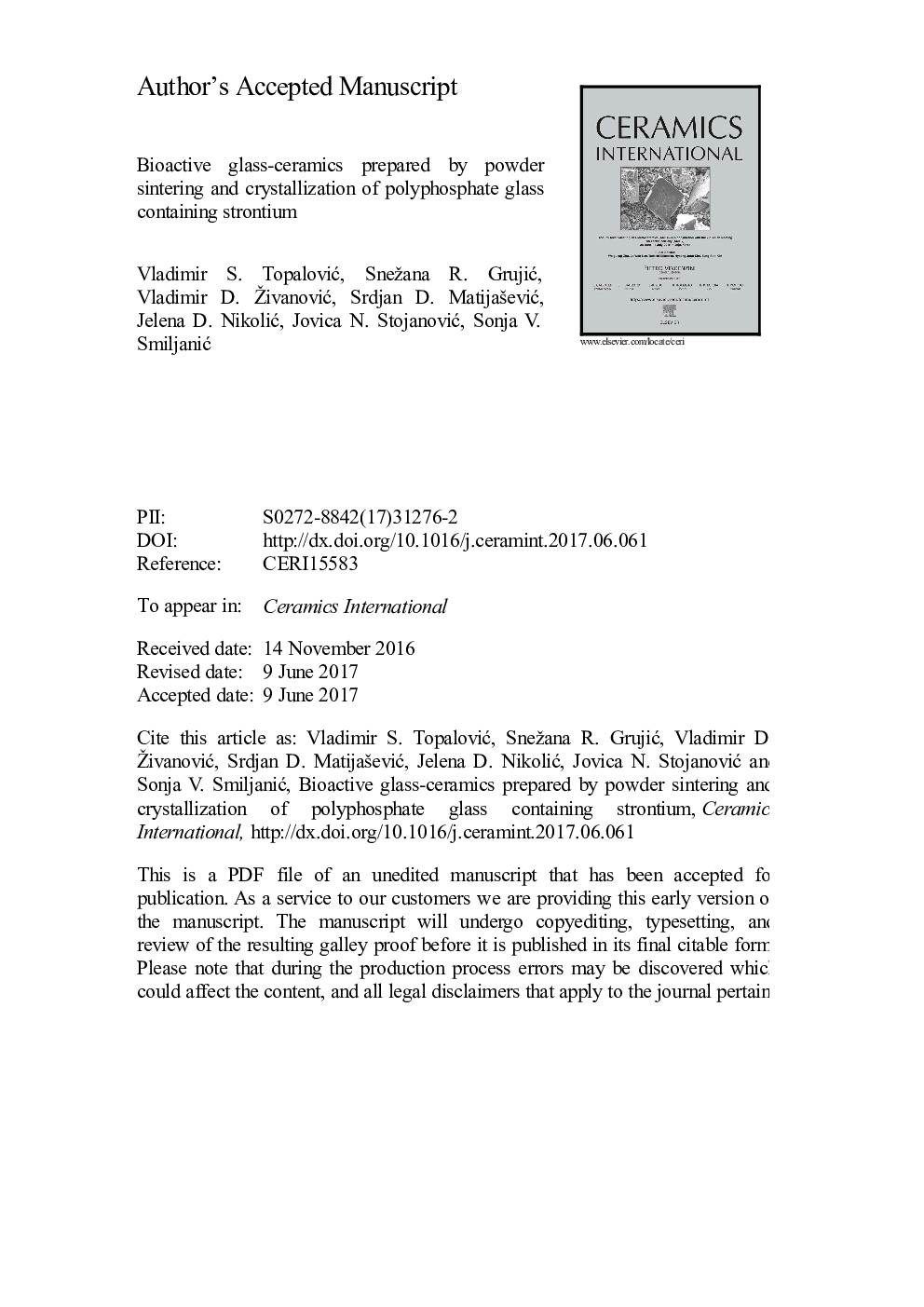| Article ID | Journal | Published Year | Pages | File Type |
|---|---|---|---|---|
| 5437499 | Ceramics International | 2017 | 31 Pages |
Abstract
Melt-quenching method was employed for obtaining a glass-ceramic with the following composition 42P2O5·40CaO·5SrO·10Na2O·3TiO2 (mol%) glass. The crystallization and sintering behavior of glass have been studied by using DTA, HSM, XRD, FTIR and SEM methods. It was determined that the surface and volume crystallization mechanisms act simultaneously in bulk glass samples. The comparison of DTA and HSM data revealed that the sintering and crystallization processes are independent. The sintered calcium phosphate glass-ceramic which contained bioactive β-Ca3(PO4)2 and β-Ca2P2O7 phases was successfully prepared. It was determined that during crystallization the primary phase in the precipitate was β-Ca(PO3)2. Other phases appearing in the resulting glass-ceramic were: α-Ca2P2O7, γ-Ca2P2O7, Ca4P6O19 and CaHPO4(H2O)2. Crystalline phases containing Sr and Ti were not detected. SEM analysis of the glass-ceramic microstructure revealed surface crystallization of glass particles and plate-like morphology of crystal growth. The result of the in vitro bioactivity showed that no apatite layer was formed on the surface of the as-prepared glass-ceramic samples after immersion in the simulated body fluid (SBF).
Keywords
Related Topics
Physical Sciences and Engineering
Materials Science
Ceramics and Composites
Authors
Vladimir S. TopaloviÄ, Snežana R. GrujiÄ, Vladimir D. ŽivanoviÄ, Srdjan D. MatijaÅ¡eviÄ, Jelena D. NikoliÄ, Jovica N. StojanoviÄ, Sonja V. SmiljaniÄ,
